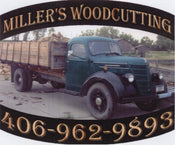Tips for Splitting Firewood
As with everything there are tricks for making it easier to split firewood with a hydraulic log splitter. The old adage to work smarter, not harder is still true.
1. Keep the wedge sharp.
A wedge that cuts through the wood needs less force than a broad wedge. This is a "duh" statement however, over time wedges get dull and need re-sharpened. Make sure that the wedge is sharpened in a way that keeps the cutting edge exactly vertical. Wedges that are sharpened in a way that allows the cutting edge to get "crooked" with the beam can lead to the wedge twisting and bending the system that holds it to the beam. When making your own splitter you want to make a wedge that is approx. 60 degrees or slightly sharper.
2. Don't split right down the center.
It takes less force to split the block near the edge rather than directly down the center. When cutting large pieces set the wedge in such a way that it goes about 1/3 from the edge.
3. Green vs. Seasoned wood.
In most species splitting the wood while it is green requires a lot less force. However, in some species the grain and fibers of the wood's vascular system will hold together leaving a stringy mess as the wood splits. In these species it is best to wait until the wood has seasoned more. These stringier woods are ready for splitting when the ends of the rounds start to check slightly. Generally these species are less desirable for firewood anyway.
4. Splitting frozen wood.
Anyone who has split wood with an axe or maul during the winter has probably noticed that it will "pop" easier when the wood is frozen. This is still true with hydraulic splitters. When running a hydraulic splitter in below freezing temps. there are other factors to remember though. Make sure that the hydraulic fluid is cycled through the system and gets a chance to warm up. Simply run the cylinder in an out until the system sounds normal. Colder fluid is hard on pumps, filters, and valves and requires more HP simply to cycle it. In addition oil filters have a by-pass element that allows thicker to pump without being restricted or damaging the filter (for a second or two cold oil is pumping through the system unfiltered). As the frozen wood "pops" it will often come flying off to either side, watch out for this. The recoil and quick shifting of the wood and wedge/cylinder can also be harder on welds and steel.
5. Splitting knotty, forked and tight grained rounds.
Rounds always seem to split easier from the ground end. When splitting a forked piece or knotty piece it will generally split easier if the wedge splits the knot and fork last. Start your split on the end furthest from the knot and put the fork towards the foot of the splitter and away from the wedge.
